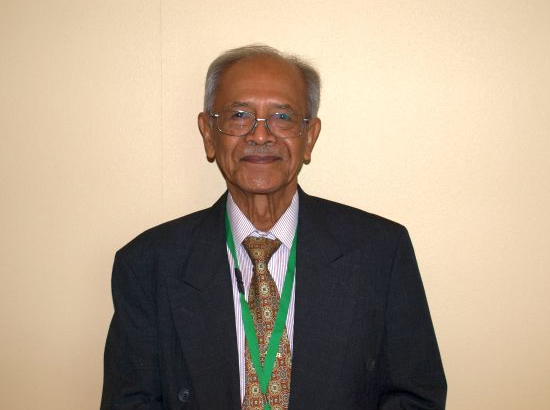Interview with Prof. Utoro Sastrokusumo, Institute of Technology Bandung (ITB), Indonesia
November 2010, at APRSAF-17, Melbourne

The APRSAF Secretariat conducted an interview with Prof. Utoro Sastrokusumo, Principal Researcher, Bandung Institute of Technology (ITB), Indonesia, on the occasion of APRSAF-17, in late November 2010, in Melbourne, Australia. Prof. Sastrokusumo has participated in APRSAF many times and has been a key member of the Communication Satellite Applications Working Group (CSAWG).
Q: First of all, could you please tell us about yourself?
<Sa> As a matter of fact, I've already retired from my position as a professor at the Bandung Institute of Technology (ITB). I am happy to say that the institute called me back to help with research activities and foreign cooperation with JAXA and some universities. I conducted research many years ago at the Tokyo Institute of Technology; it was around 1980. My research was on radar absorbing materials. We worked together with many professors there.
Q: Why does your country need satellite communication or satellite technology to manage natural hazards or climate change?
<Sa> As you know, Indonesia is very wide, like from California to New York. And, we have more than 70,000 islands, mostly small islands and remote places. Therefore, we have to provide proper communications, and satellites are the best option. Moreover, we are surrounded by "the Ring of Fire." There are volcanoes stretching from Sumatra, Java, and the eastern part of the Philippines to Japan. We have many volcanic eruptions, earthquakes, tsunamis, landslides, and typhoons. To rapidly mitigate these natural disasters, we need coordination not only among our own agencies but also with neighboring nations in the Asia-Pacific region. We belong to Sentinel Asia, and we sent some students to be trained in Bangkok about two years ago.
Q: Could you please explain your problem?

<Sa> A new regional server / client terminal of Sentinel Asia has been installed by JAXA and is jointly operated with LAPAN (National Institute of Aeronautics and Space of Indonesia) in Jakarta. This terminal is an SA-VSAT (Sentinel Asia - Very Small Aperture Terminal) of WINDS working in the Ka-band. As you know, radio communication in the Ka-band can be strongly affected by rainfall. And, Indonesia is in a tropical zone with a lot of heavy rainfall.
If an emergency occurs while it is raining, we might not be able to use SA-VSAT properly for disaster-mitigation services. What we have to do first is to improve the WINDS communication system.
Q: Do you have a solution?
<Sa> Yes. First, theoretically we know how Ka-band satellite communication operates in non-tropical zones such as the USA, Canada, and Europe. But, we need to understand the characteristics of Ka-band satellite communication in a tropical zone such as Indonesia. Therefore, we have proposed to JAXA, NICT (National Institute of Information and Communications Technology of Japan), NEC Corporation, University of the Ryukyus, etc., that we conduct collaborative experiments on Ka-band and related technology at our institute (Bandung Institute of Technology).
Second, for safer communication, we may consider the C-band for an alternative network for Sentinel Asia.
Q: What are your hopes for the future of Sentinel Asia? What do you want?
<Sa> You know that we may have to use ICT, information and communication technology. Sentinel Asia has very good networking for early-warning systems. If you have many nations with different experiences, you can share them. That is the best way to learn, and Sentinel Asia can hopefully give us this assistance.
<Secretariat> Thank you very much.